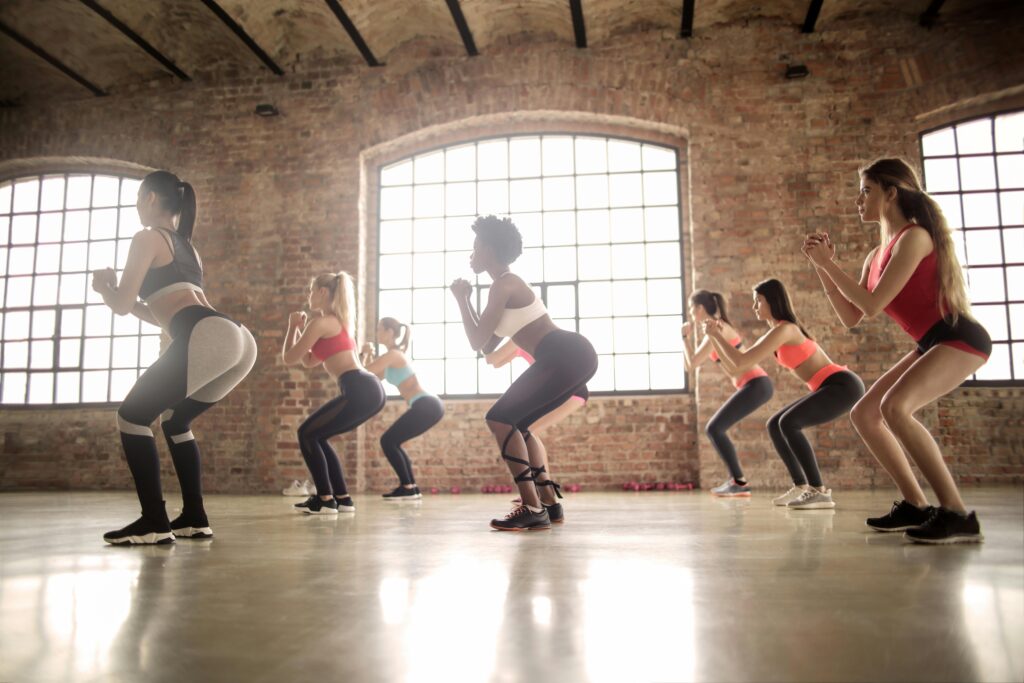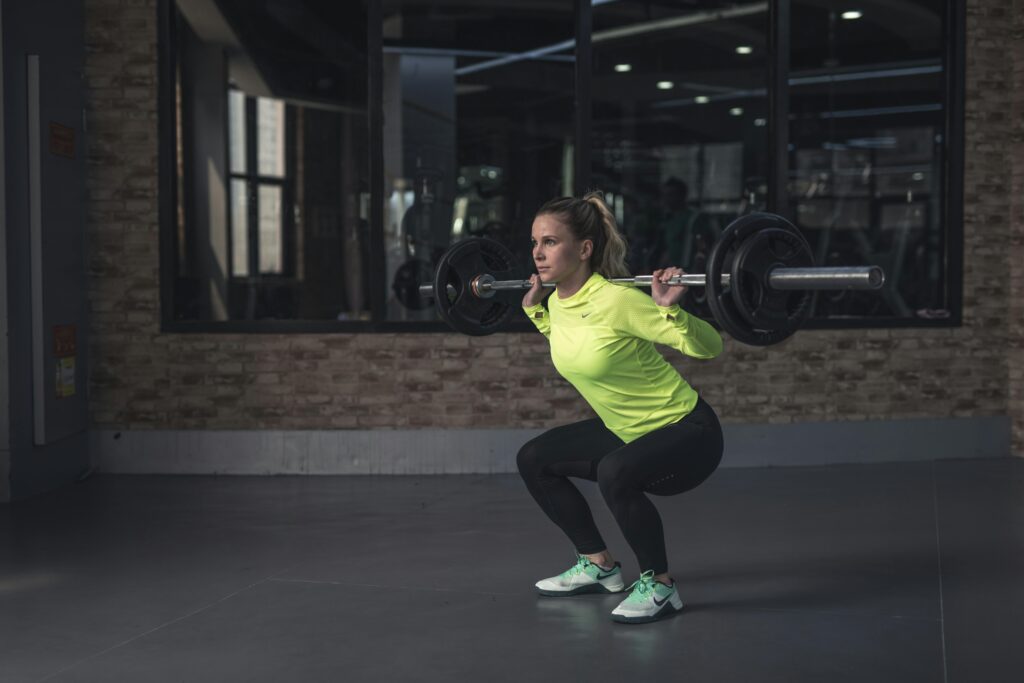
At first glance, squats may seem like a “leg day” move — but in truth, they’re one of the most complete exercises you can do. When you squat, you’re not just targeting your thighs. Your glutes fire up to drive you upward. Your hamstrings and calves support your descent and stability. Meanwhile, your core muscles are bracing to protect your spine, and if you’re holding any form of weight — a barbell, dumbbell, or kettlebell — your upper back, shoulders, and arms are doing their part too.
Squats are a compound movement, meaning they activate multiple muscle groups and joints at the same time. That’s why you feel breathless after a heavy set — you’re using so much of your body at once. They build not just strength, but coordination, balance, and power. That makes squats a top-tier choice for athletes, gym-goers, and even people in rehab or physiotherapy.
Here’s the truth: if you’re a human being who moves, you already squat. Sitting down, getting up from bed, picking up a child, lifting a bag of groceries — these are all squat-like movements. That’s why improving your squat doesn’t just improve how you train; it improves how you live.
When you practice squats with proper form, you’re teaching your body how to lift safely, move efficiently, and stay balanced under load. This helps prevent injuries, especially to your knees and lower back — areas that often get hurt during basic daily activities due to weakness or poor posture.
Functional strength means strength that shows up outside the gym. Squats give you just that.
Your body responds to effort. When you challenge it with a powerful, demanding movement like the squat, it rewards you by releasing beneficial hormones. We’re talking about growth hormone, which helps you recover and build muscle, and testosterone, which plays a key role in strength, performance, and even mental energy — for both men and women.
Because squats engage some of the largest muscles in the body (like the glutes and quads), they create a metabolic ripple effect. You might train your legs, but you’ll notice your arms, chest, and back getting stronger too, thanks to the hormonal response squats trigger. If your goal is to gain lean muscle mass or improve your overall body composition, squats are a non-negotiable part of that journey.
Think crunches are the best way to train your core? Think again. A deep, controlled squat — especially with resistance — requires your entire core to activate. Not just your abs, but also your obliques, lower back, diaphragm, and deep stabilizers like the transverse abdominis.
This engagement helps you build true, functional core strength — the kind that keeps you stable while lifting, standing, or twisting. Over time, this results in improved posture, less back pain, and better athletic performance. The more you squat, the stronger your foundation becomes, and the easier other movements start to feel.
People often avoid squats out of fear they’ll damage their knees or hips — but the opposite is usually true. Squats done with proper technique strengthen the joints by training them through a full range of motion. In fact, your knees, hips, and ankles actually become more mobile and resilient when you squat regularly.
Of course, good form matters. It’s important to squat to a depth that suits your body, keep your knees tracking over your toes, and avoid collapsing your chest or spine. Done right, squats teach your joints how to move safely and support your body through challenging positions — which can help prevent long-term joint issues as you age.
If fat loss is your goal, you might be tempted to spend hours doing cardio — but squats could be your secret weapon. Because they recruit so many large muscles, squats require a huge amount of energy, which means they burn a lot of calories — not just during your workout, but for hours afterward.
They also help you build lean muscle mass, which increases your resting metabolic rate. That means you’ll burn more calories even when you’re not moving. Incorporating squats into your routine two to three times a week can make a significant difference in how your body stores and burns fat — especially when combined with good nutrition and recovery.
One of the best things about squats? They’re incredibly versatile. You don’t need a gym, fancy equipment, or even much space. If you’re just starting out, bodyweight squats are a great way to build strength and practice form. As you progress, you can try:


There’s a squat variation for every goal — whether you’re training for a sport, recovering from an injury, or just trying to feel more confident and strong in your body.
In the end, c are simple — but that’s their genius. You don’t need to overcomplicate things to see results. A consistent, well-performed squat routine can change how you move, how you look, and how you feel. It’s not about chasing perfection. It’s about doing something basic — really well, really often — and watching the benefits ripple through every part of your life.
So if you’ve been skipping leg day, or avoiding squats because they’re hard — now’s the time to start. Take it slow, learn the form, and let your body get stronger one rep at a time. Squats may not be glamorous, but they are powerful, honest, and incredibly effective. Stick with them, and they’ll serve you for life.

SatynMag empowers women with inspiring stories, expert advice, and uplifting content to fuel their strength and dreams
Welcome to Satynmag S Suite, online knowledge platform for career and personal growth. This is where you can empower yourself with cutting edge knowledge, latest know-how and grow.


